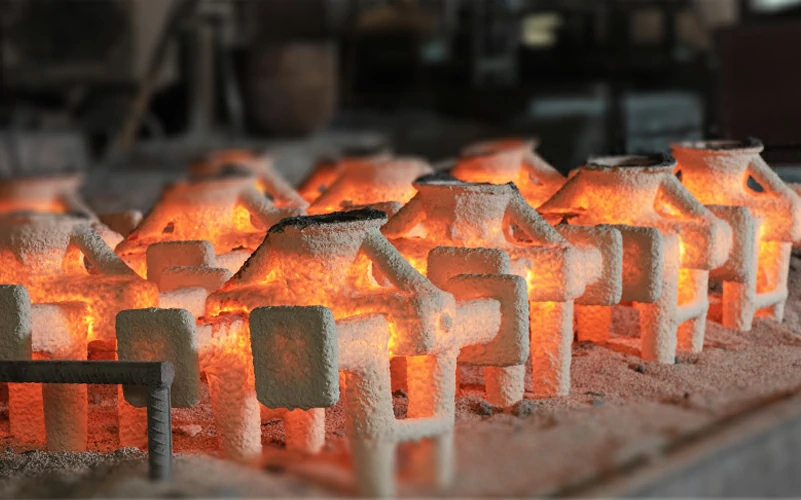In the realm of modern industry, casting technology plays a pivotal role in providing essential components for various sectors such as construction, automotive and machinery. The following outlines the typical product production flow at a casting company, showcasing the key process steps from mold creation to the shipment of the final products.
The production process begins with the creation of molds. Precise and high-quality molds are crucial to ensuring that the final products meet design specifications.
A wax mold is injected into the mold to form the shell of the casting.
The wax mold should replicate the detailed structure of the desired part.
After wax injection, any necessary repairs are made to ensure the integrity of the wax mold, including filling any possible voids or defects.
The wax mold is cleaned and treated to ensure that the surface is smooth and free of impurities.
Assembles multiple wax molds on a tree stand to form a set of molds that can be cast in a single pour.
The wax molds are shell coated, usually with ceramic particles and a binder, to create a hard shell.
The wax molds are placed in a hot environment where the wax melts and runs off, leaving the shell behind.
The dewaxed shell is treated to prepare it to receive molten metal.
The shell is placed in a high temperature oven to make it harder and more heat resistant in preparation for pouring.
The molten metal is poured into the prepared shell to fill the cavities in the shell and form the final casting.
The chemical composition of the casting is inspected to ensure that it meets the requirements.
Using vibration equipment, the shell from the casting to separate for subsequent processing.
Remove shell residue to obtain the original appearance of the casting.
Remove any attachments and sprues from the casting for a smooth appearance.
Place the casting in a high temperature furnace for heat treatment to improve its hardness and wear resistance.
Any necessary trimming of the casting to ensure that it meets specifications and dimensions.
If necessary, reshape the casting after heat treatment to restore its original shape.
The surface and dimensions of a casting are inspected to ensure its quality.
Improvement of corrosion resistance of castings by chemical treatment of their surfaces.
Machining or polishing to improve surface quality and accuracy.
Surface coating of castings to provide additional protection or appearance.
Assembling parts together to form a final product.
A thorough inspection of the final product to ensure that its quality and performance meets specifications.
Packaging the finished product and arranging transportation for delivery to the customer.
